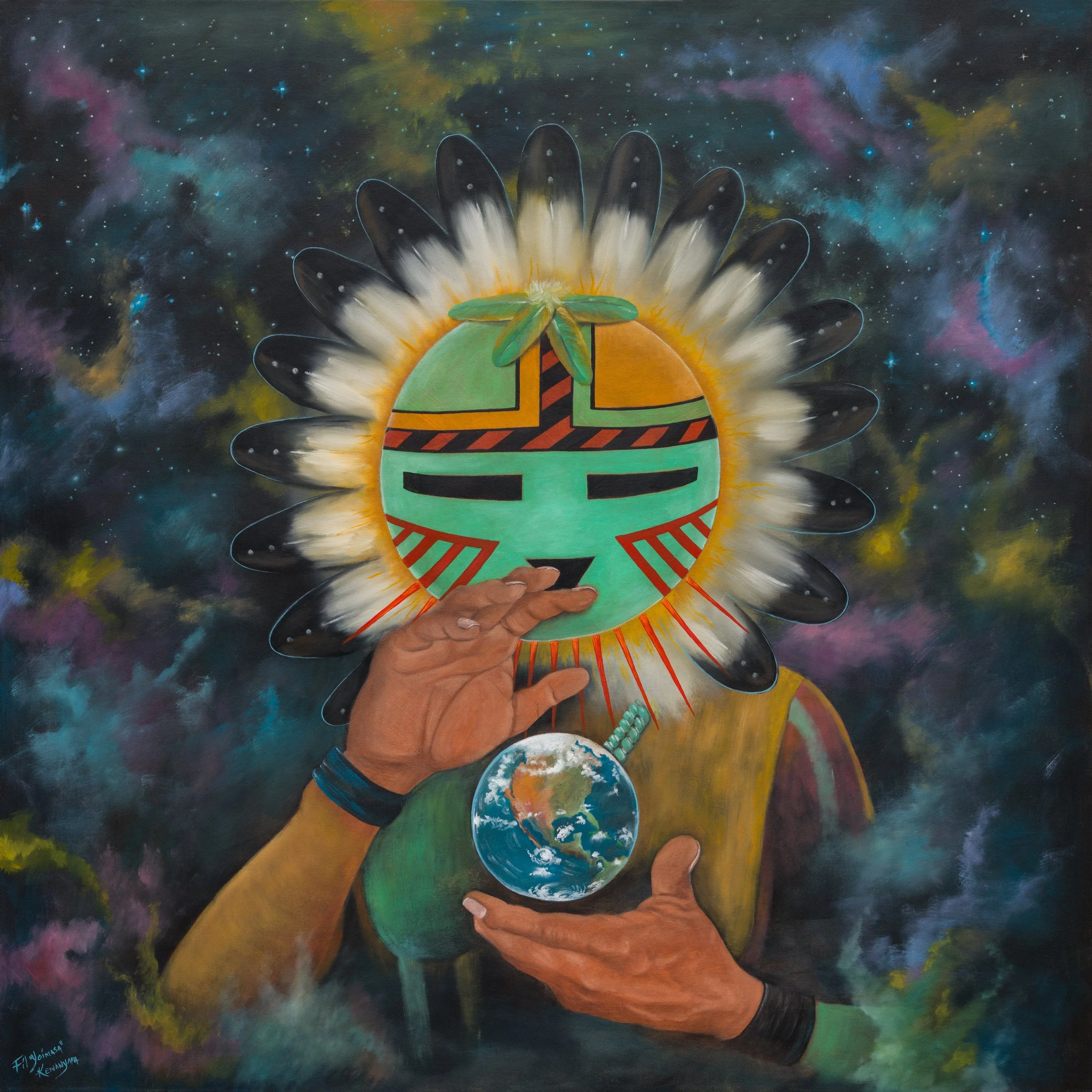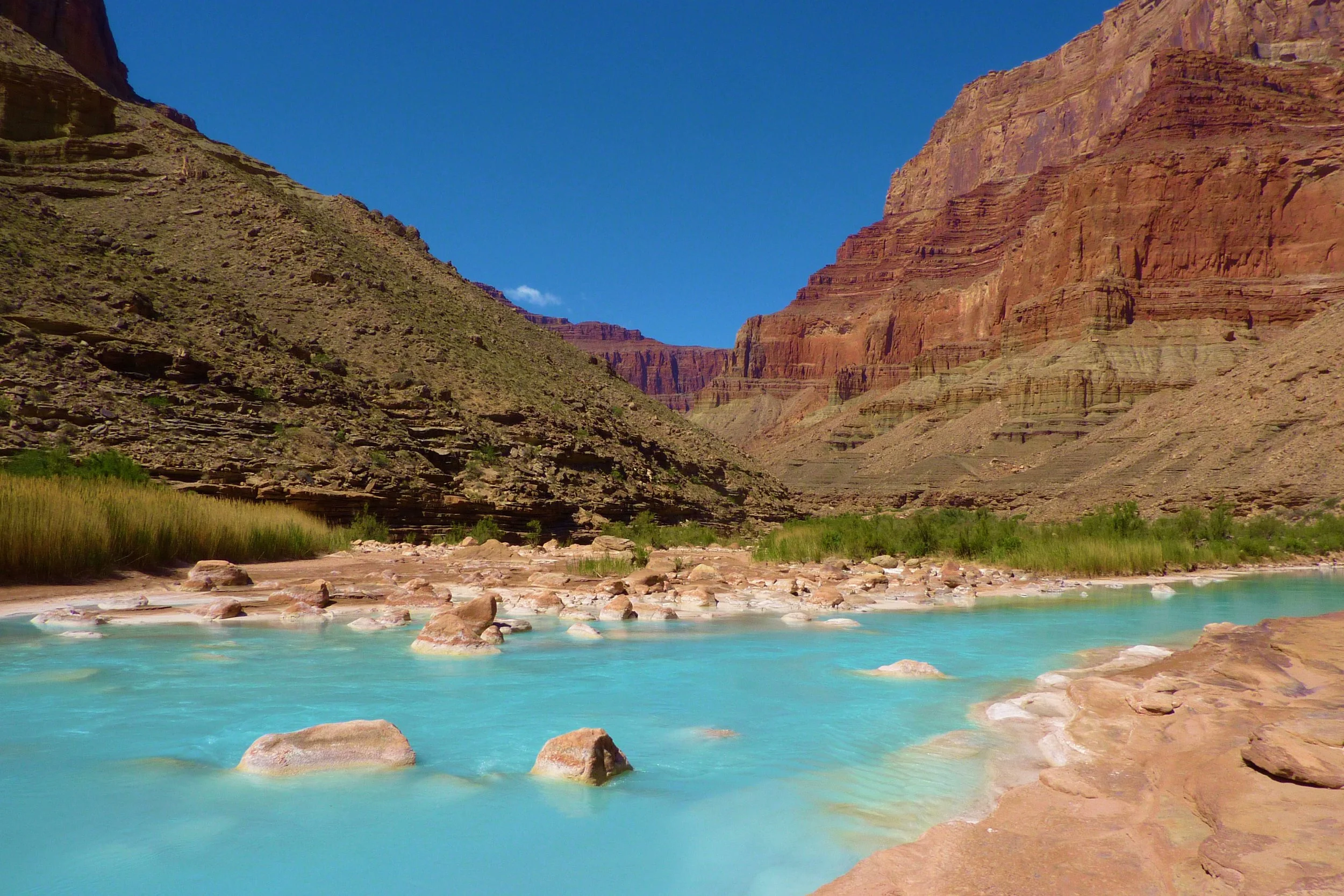Amplifying Present-Day Native American Voices
This November, Hopi Artist Filmer (Yoimasa) Kewanyama gave a presentation to museum guests on retracing ancestral footsteps to Ongtupqa (the Grand Canyon), his artwork, and the cross-cultural collaborations that made a sacred pilgrimage possible.
“Hopi people are very artistic,” said Kewanyama. “Every Hopi child grows up artistically. It's embedded into us that way.” From a young age, Hopi children learn skills by watching their family members make things like lightning sticks and katsina dolls. Kewanyama started drawing at an early age and also watched his father, who was a silversmith, sculptor, painter, and katsina doll carver. “After that, it just kind of stuck with me,” he added.
Kewanyama served in the Army for 21 years and didn’t make art again until he retired, moved to Prescott, and attended Yavapai College. While earning an associate degree in graphic design, he ventured toward the fine arts where he found his love of oil painting.
Kewanyama’s paintings depict the Hopi way of life and the spirituality of what Hopi means to him. He explained that Hopi are one of the few Native American Tribes that cling to their old way of life and its ceremonies, and his paintings often picture a balance between ceremonial and non-ceremonial life.
The majority of his paintings are katsina paintings. For six months out of the year, Hopi focus on the katsina life. Kewanyama described katsinas as benevolent spiritual beings that bring good things, like rain, but can also be disciplinarians.
“They represent a lot of different things,” said Kewanyama about katsinas. “When I paint them, every painting has its own story or explanation as to what it means.”
While each of his paintings tell their own narrative, he said that the common thread in all of them is the sacredness of water. Hopi live in a dry, desert climate, practice dry farming, and look to their spiritual way of life to bring rain. He explained that every katsina has something on them that represents water, whether rainfall, clouds, or thunder, and indicated through things like colors or dress.
Growing up on Hopi, Kewanyama learned the ceremonies that his ancestors passed down, such as the social dances, another subject he frequently paints.
When people visit Arizona, they’re often unaware of the smaller tribes that exist, like Hopi and Zuni. One of Kewanyama’s goals is to bring awareness of who Hopi are to non-Hopi through his art.
“My paintings about Hopi ceremonial life are my way of bringing awareness to who we are in today’s world, trying to live the way that our ancestors wanted us to live ceremonially, but at the same time balancing it out by having jobs, and going to work and school,” he said.
Kewanyama also crafts traditional items like katsina dolls, lightning sticks, and rattles, and has recently started experimenting with clay sculpting, but his love has always been for painting.
During his presentation at VVAC, Kewanyama shared paintings that represent the Hopi story of emergence and migration to introduce his recent pilgrimage into the Grand Canyon. Because of land restrictions, the pilgrimage was taken by boat with a hired crew, traveling 224 miles in 14 days.
He shared photographs he took during his trip to share why it was important to them, but also to acknowledge the non-Hopi who were essential to their journey.
“My intent was not to just talk about Hopi,” said Kewanyama. “My intent was to share images about the Grand Canyon and how there is a relationship between Hopi and those that support us and take us on this journey…This particular presentation was to show how people can come together to make things work for one another.”
This is the third pilgrimage Kewanyama has been on. He shared that the boatmen and boatwomen that took them on this journey continue to do it every year because they too have come to love it, and feel like they're a part of a bigger purpose.
“I'm really happy that I could do this for our people, but also for the good of everyone,” said Kewanyama. “Hopi’s mentality is that everything that we do is not just for Hopi, it’s not just for Native Tribes, it’s for mankind. It's for the good of everything around us. That’s why when we go to these places, we give our offerings not just for us, but for the good of the universe.”
Kewanyama also shares his art and knowledge to preserve his culture. Following his talk, a Hopi person in the audience approached him. They did not grow up on Hopi but wanted to reconnect with their roots. Unaware of Hopi’s connection to the Grand Canyon, Kewanyama was grateful to share that knowledge with them.
“Keeping our culture alive is an ongoing concern for all of us: any kind of art, song, dance, painting, sculpting, even cooking is important,” Kewanyama said. “Everything has its place to keep our culture alive.”
At VVAC, we celebrate the cross-cultural collaborations that are essential for responsibly stewarding a collection of Native American artifacts in the present day.
“It's necessary that our space amplifies current Native American voices and serves as a catalyst for fostering these dialogs, as well as enhancing people’s awareness and understanding that Tribes such as Hopi and the Yavapai-Apache Nation are thriving cultures,” said Monica Buckle, VVAC’s Executive Director.
For example, there were Hopi and Zuni katsinas on view as part of our Indigenous Arts exhibit on loan from the Tucson Museum of Art. To weave in a contemporary Indigenous perspective, VVAC commissioned Darance (Makwesa) Chimerica, a Traditional Hopi Katsina Carver, to create a narrative on katsinas and what they mean to him.
“As custodians to a collection of Ancestral Hopi and Native American cultural items, it’s imperative that we have good working relationships with community members, artists and representatives at Hopi and other Tribes to bridge the past to the present,” continued Buckle. “These relationships have been built up for years. Because of these relationships that have been nurtured and respected, the artists we work with, community members, and Tribal representatives are comfortable speaking about their culture in VVAC’s museum space, which is testament to the work this organization conducts.”





